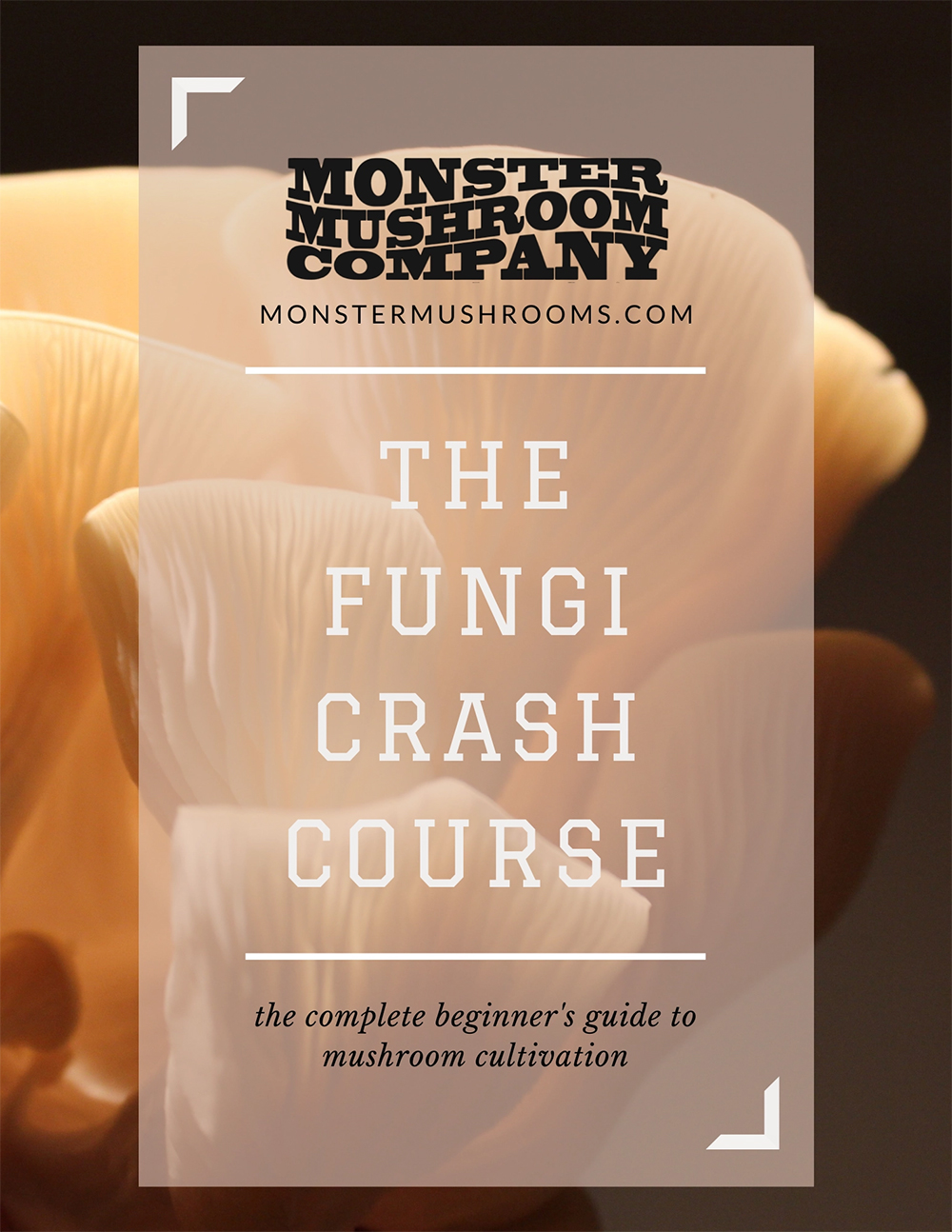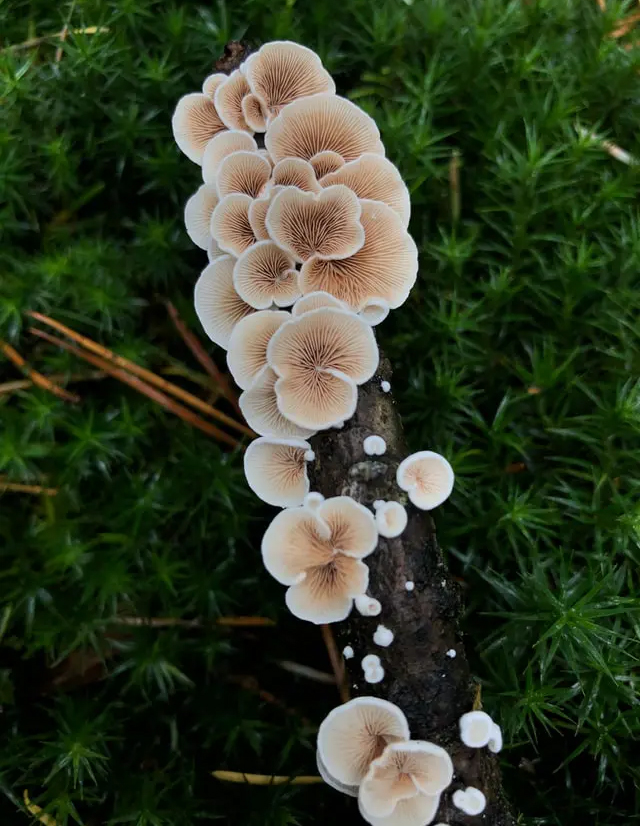Did you know that growing mushrooms at home isn’t just possible—it’s fun, easy, and incredibly affordable even for total beginners?
Mushroom cultivation is one of those hobbies that has a low barrier of entry but plenty of room for growth. We once heard a customer describe mushroom cultivation as a very “balanced” hobby, because it doesn’t require that you dedicate a ton of time to get satisfying results, but it isn’t a “set and forget” activity either.
With a little attention and know-how, you can easily grow mushrooms in your home, apartment, garage, or just about anywhere else you want. Depending on how many mushrooms you want to harvest in a single batch, you really don’t need all that much room, either. It’s cheap to get started—more on that later—and, if you can follow simple directions, it’s not terribly difficult to do. However, if it turns out that you love the hobby, it can even become a profession or “side gig” as many gourmet mushrooms can be sold for a tidy profit.
Speaking of gourmet mushrooms, that’s a whole other benefit of learning how to cultivate mushrooms at home. Pearl oysters, shiitakes, and chanterelles are expensive at the grocery store (if you can even find them; it’s sometimes necessary to visit specialty shops). However, if you know how to grow them yourself, you can have a never-ending supply at a fraction of the cost. In fact, many chefs become mushroom cultivators for this exact reason.
As you can see, there are countless reasons—far too many to list in one place, in fact!—that mushroom cultivation can become quite a positive force in your life, whether as a simple hobby or more. Nevertheless, we’re going to try and put to word a few of the more poignant reasons why you’re going to have a great time growing mushrooms. If you’re on the fence about picking up one of our All-in-One Mushroom Grow Kits, all we can say is to just go for it. You won’t regret it.
Let’s dive in:
Cultivating Mushrooms is the Quickest Way to Understand Fungi on a Deeper Level
While we fully admit that this isn’t the most “exciting” reason to get into DIY mushroom cultivation, we’ve decided to place it first on the list because it’s actually a pretty big deal—it’s just not something you really understand the benefits of until you’ve gotten into things a bit more.
As you may already know, mushrooms aren’t plants. While they share some of the same traits as plants, such as growing in the ground, requiring adequate hydration, and so on, they’re very much “their own thing”, with their own scientific kingdom and everything. In fact, you may be very surprised to learn that fungi are much more similar to humans than plants.

A little mind blowing, isn’t it? As it turns out, humans and fungi share much of the same DNA. Scientists believe that mammals, some of which were predecessors to humans, and fungi had a shared common ancestor that lived over a billion years ago. This is all relatively new information. In fact, at one point mycology (the study of fungi) was actually considered a subsection of botany, the study of plants. Scientists then thought that fungi were a type of “primitive plant,” but we now know that they’re entirely unique.
So, knowing all of this, by cultivating mushrooms you’ll get to enjoy a much deeper understanding of these totally unique organisms. In particular, you’ll understand the fungi reproductive cycle, which isn’t terribly complex but is terribly fascinating. There’s a lot of joy to be had in taking a syringe filled with microscopic spores and ultimately watching those spores become mycelium and mushrooms.
Growing Mushrooms at Home Isn't Expensive
Let’s discuss cost for a moment. Cultivating mushrooms is an inexpensive hobby (and on the professional side of things, offers a “side hustle” that requires limited startup capital—we’ll explore this more later).
Essentially, all that’s necessary are a few simple tools. You’ll need:
- A growing chamber (i.e., a monotub)
- Substrates (for spawning and fruiting)
- Spores, either in a syringe or a print (our All-in-One Kit includes a free pearl oyster mushroom spore syringe)
There’s a bit more to it than that, but not much. For a more detailed look at everything you need for an amazing first grow, read over our article Everything You Need for Amateur Mycology at Home.
Let’s talk numbers: growing mushrooms, even with all the “bells and whistles” (like a hygrometer to monitor humidity) won’t cost you more than a few hundred bucks at most. It’s one of the least expensive yet most rewarding things you can do!
However, the hobby does come with a few caveats, namely that to truly get into it you’ll have to pick up some new vocabulary. Fortunately, we’ve made that easy for you:
You’ll Learn a Lot of New Terminology – So Here’s a Free Glossary Book
Growing your own mushrooms will of course require you to learn a bit about mycology, the study of fungi. That should come as no surprise of course, but mycology, even amateur mycology, will likely involve a lot of new terms and concepts that you’re not familiar with yet.
For some beginners, this can be overwhelming, For example, do you know what rhyzomorphic means, or why flushing is a good thing in mushroom cultivation?
Here’s the good news: we’ve painstakingly prepared a glossary of the most commonly used terms that you’re likely to run into during your first foray into the mushroom cultivation hobby. It’s part of our free eBook, The Monster Mushroom Company Fungi Crash Course, which also includes a lot of other very useful information for first-timers.

Get Your FREE Copy of Our eBook!
Get your comprehensive beginner’s guide to mushroom cultivation and find out how easy it is to grow your own mushrooms. With this knowledge in hand and our superior Mushroom Grow Kits, you will be on your way to becoming a master at cultivating your own mushrooms.
And in the process you’ll be signing up for our newsletter where you’ll get even more tips and insights to use in your new hobby. You’ll always be up to date and informed on the latest news, trends and goings-on in the world of mushrooms.
Chefs Rejoice: an Unlimited Supply of Fresh Culinary Mushrooms
As we mentioned in the beginning of this article, many chefs become mushroom cultivators for the express purpose of being able to grow their own mushrooms. Certain kinds of mushrooms can be difficult to find at regular grocery stores, so visiting specialty shops becomes necessary—and even then it’s a real roll of the dice as to whether they’ll have what you’re looking for.
Furthermore, store-bought mushrooms are often canned, dried, or sealed in a vacuum bag. Finding fresh gourmet mushrooms, especially if they’re of an uncommon variety, can be very difficult. And, if and when you do come across them, they’re sure to be quite expensive.
Growing your own mushrooms for cooking eliminates all of these problems and introduces more than a few benefits:
- Growing your own mushrooms is far, far less expensive
- Your mushrooms will always be fresh and never canned or dried (unless you yourself choose to preserve them in that manner)
- You’ll be able to pick the best mushrooms from the entire harvest for your recipe, not just whatever came in the package you bought
- You’ll have an intimate knowledge of the environment the mushrooms were grown in since you did it yourself—no unexpected chemicals or additives will have been used
…And that’s just a few examples!
Overall, growing mushrooms is a fantastic way to get cheap, delicious ingredients, expand your recipe repertoire, and discover new tastes. Plus, there’s really nothing quite as satisfying as having a bite of an omelette, a stew, or even a fancy burger when you know that the mushrooms in the dish were raised solely by yourself!

Ornamental Mushrooms for Decoration – Add Flair and a Huge “Cool Factor” to Your Garden
Everyone knows how pretty flowers can be, but did you know that there are many beautiful, colorful mushrooms and that there’s a whole community of mushroom cultivators out there who grow them purely for ornamental purposes?
Let’s take a look at a few of the most popular ornamental mushrooms:
Phlogiotis helvelloides. Despite having a name that’s near impossible to pronounce, this mushroom is gorgeous and colorful. Its fluted shape makes it almost mistakable for a blooming flower, except it isn’t.
Ogre mushrooms. Ogre mushrooms are one of the most unique members of the ornamental fungi varieties. They’re white or alabaster in color and have spiked (although not sharp) protrusions from the cap and stem. If rock metal had it’s own mushroom, it would be the Ogre.
Members of the Ramira species. This beautiful fungi species is a member of the clavaroid group, which also goes by the name “Coral Fungi.” As you might suspect, it’s because they look like underwater coral. They’re easily some of the most striking ornamental fungi you can grow, and if you have an interest in this area of the hobby, they’re well worth cultivating at least once.
Again, these are just a few examples of stunning ornamental fungi—there are hundreds if not thousands of varieties to explore. However, what if you aren’t all that interested in ornamental mushrooms, and cooking isn’t really your thing either? You may find a lot of use in cultivating medicinal mushrooms.

Medicinal Mushrooms: Lions Mane, Cordyceps, Turkey Tail, and Many Others
Humans have long used mushrooms for medicinal purposes. These days, getting your hands on some of these varieties can be difficult and expensive; of course the solution is to grow them yourself!
For example, Lion’s Mane is well known as a powerful means to supporting your nervous system and cognition. Cordyceps mushrooms boost energy levels while fighting fatigue and have anti-inflammatory properties among other benefits. Turkey Tail mushrooms, often dried and brewed into a tea, are great at improving digestive health.
There are many, many other medicinal mushrooms that you could grow yourself, many of them with wonderful benefits. If this type of mushroom cultivation excites you, other fungi varieties to look into are reishi, chaga, shiitake, and maitake mushrooms.
Mushroom Cultivation: A Hobby Or a Profession
Some mushroom cultivators start out as hobbyists, but then find that they have a passion for fungi. It can be so fun and rewarding that taking this activity to the next level is the logical choice: becoming a professional mushroom farmer.
As we discussed earlier, culinary and medicinal mushrooms can be expensive, hard to find, or both. This, as you can no doubt surmise, places mushroom farmers in a pretty good position—it’s all about supply and demand.
The term “farmer” isn’t entirely accurate, at least not in the way that we usually think of farmers. Mushroom farmers don’t need a lot of land or expensive equipment. Essentially, if you’ve grown mushrooms as a hobby, it’s just ramping up production. Most mushroom farms are primarily indoors, so you’d just need a large enough space with adequate temperature control to get started (some mushroom farmers even operate out of their garages or outbuildings).
Pearl oyster mushrooms are in particularly high demand in most areas of the United States, but professional mushroom cultivators can also do quite well with other varieties, including medicinal mushrooms like the ones we discussed above.
Excited? Here’s How to Get Started Growing Mushrooms Right Away
If you’ve taken some inspiration from this article and you’d like to experience the absolute joy of mushroom cultivation for yourself, it’s not at all difficult to get started! For more resources, make sure to check out the Monster Mushroom Company blog and, if you want to order a kit that has everything you could ever possibly need for a bountiful mushroom harvest, we strongly suggest our All-in-One Kit.
